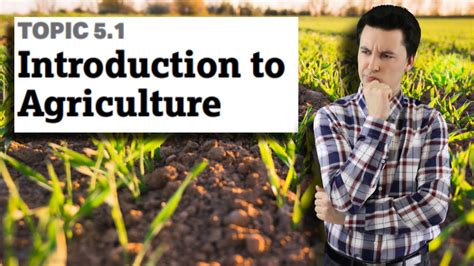Introduction

Extensive farming, characterized by low input and low output agricultural practices, plays a vital role in shaping our planet’s landscapes and livelihoods. This article delves into the practices, environmental consequences, and socioeconomic implications of extensive farming, providing a comprehensive overview for AP Human Geography students.
Practices of Extensive Farming
Extensive farming encompasses a wide range of practices, including:
- Pastoralism: The nomadic herding of animals over vast tracts of land, primarily in arid and semi-arid regions.
- Shifting cultivation: A rotational farming system where crops are grown in a given plot for a few years before abandoning it for a new area.
- Subsistence agriculture: Farming practices primarily aimed at meeting household needs rather than commercial production.
- Extensive grazing: The grazing of livestock on large, unenclosed pastures, allowing animals to roam freely.
- Ranching: The commercial herding of livestock, typically on large, private lands.
Environmental Consequences of Extensive Farming
Extensive farming practices can have significant environmental consequences:
- Deforestation: Clearing forests for grazing or cultivation can lead to habitat loss, biodiversity decline, and carbon emissions.
- Desertification: Overgrazing and shifting cultivation in arid regions can degrade soil fertility and lead to desertification.
- Water depletion: Extensive grazing and shifting cultivation require large amounts of water, which can strain water resources in arid and semi-arid regions.
- Soil erosion: The lack of vegetation cover and soil conservation practices in extensive farming systems can result in severe soil erosion.
- Climate change: Extensive farming contributes to climate change through deforestation, methane emissions from livestock, and nitrous oxide emissions from nitrogen fertilizers.
Socioeconomic Implications of Extensive Farming
Extensive farming has far-reaching socioeconomic implications:
- Livelihoods: Extensive farming supports the livelihoods of a significant portion of the world’s population, primarily in developing countries.
- Food security: In many regions, extensive farming provides a critical source of food and nutrition.
- Land tenure: Pastoralism and extensive grazing often require large tracts of land, which can lead to conflicts over land rights.
- Economic development: Extensive farming can promote economic development in rural areas by supporting local communities and industries.
- Cultural heritage: Extensive farming practices are often intertwined with cultural traditions and beliefs, shaping the identities of rural communities.
AP Human Geography Considerations
Population and Settlement: Extensive farming practices favor low population densities and dispersed settlements, as they require large areas of land.
Food and Agriculture: Extensive farming systems contribute to global food production but typically have lower yields than intensive farming practices.
Land Use and Conservation: Extensive farming can have both positive and negative impacts on land use, depending on the practices employed and the environmental context.
Water Resources: Water availability and conservation are critical factors in extensive farming regions, as these practices often require large amounts of water.
Globalization: Extensive farming can be affected by global market forces, such as shifts in demand and competition from intensive farming systems.
Tips and Tricks for AP Human Geography Students
- Understand the different types of extensive farming practices.
- Analyze the environmental consequences of extensive farming in various contexts.
- Identify the socioeconomic implications of extensive farming for local communities and regions.
- Apply your knowledge to case studies to demonstrate your understanding.
- Use examples to support your claims and observations.
Common Mistakes to Avoid
- Assuming that extensive farming is always unsustainable. While extensive farming can be environmentally damaging in some cases, it can also be sustainable when practiced with appropriate land management techniques.
- Ignoring the importance of extensive farming for livelihoods. Extensive farming supports the livelihoods of many people worldwide, particularly in developing countries.
- Overlooking the cultural and historical significance of extensive farming. Extensive farming practices are often deeply rooted in cultural traditions and beliefs.
- Making generalizations about extensive farming without considering geographical variations. The practices and impacts of extensive farming vary widely depending on the local environment and socioeconomic context.
Conclusion
Extensive farming practices play a significant role in human geography, shaping landscapes, livelihoods, and environmental conditions around the globe. Understanding the complexities of extensive farming is essential for AP Human Geography students to grasp the challenges and opportunities facing our planet and its people. By analyzing the practices, consequences, and implications of extensive farming, we can develop informed decisions and policies to promote sustainable land use, food security, and the well-being of rural communities.
